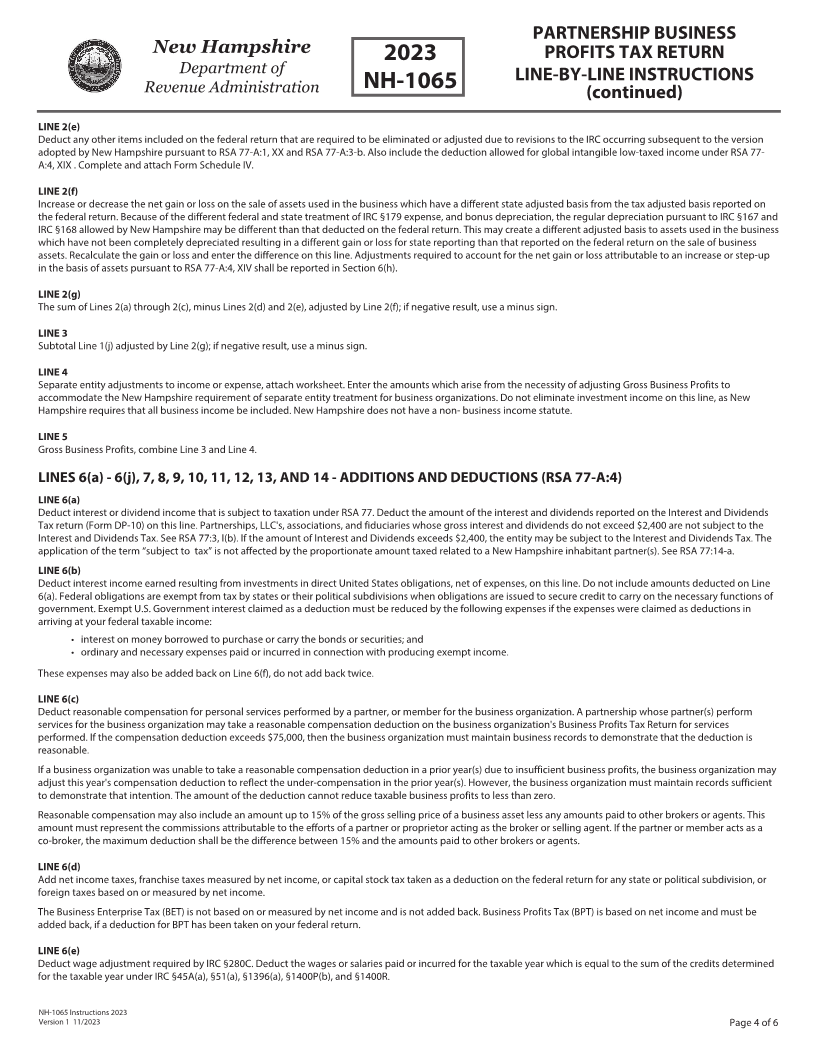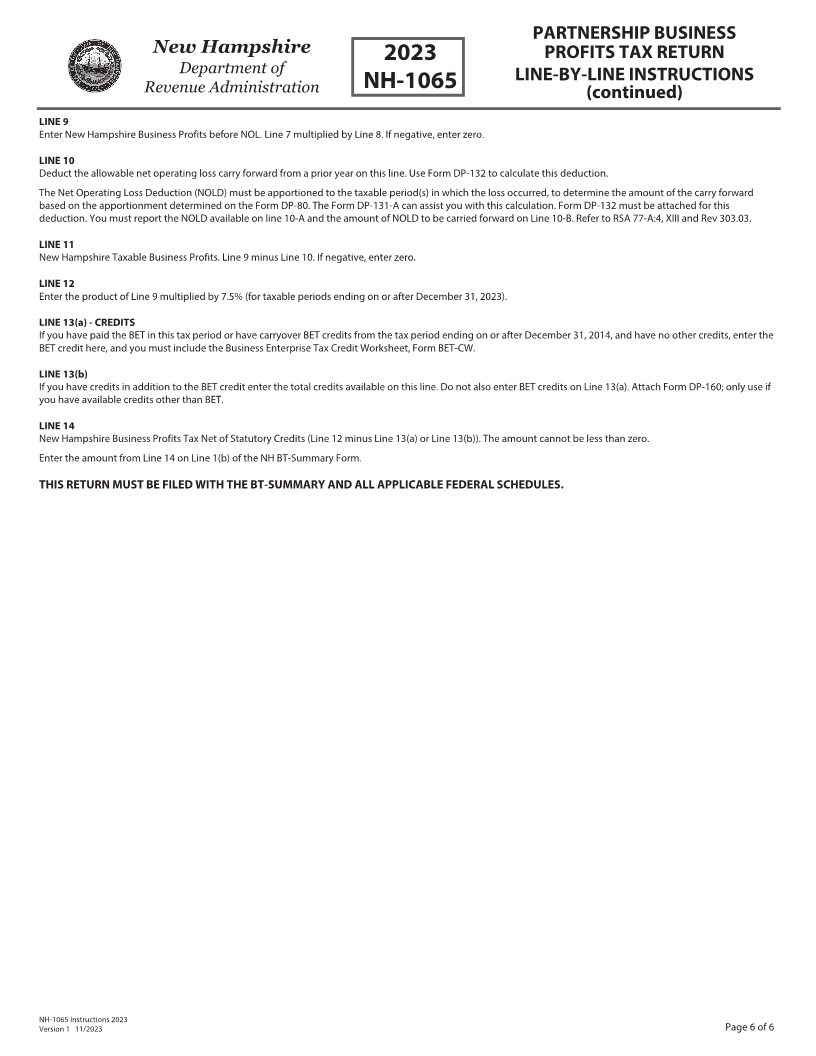
Enlarge image
New Hampshire PARTNERSHIP BUSINESS
Department of 2023 PROFITS TAX RETURN
Revenue Administration NH-1065 GENERAL INSTRUCTIONS
WHO MUST FILE
All business organizations, including Limited Liability Companies (LLC), taxed as a partnership federally must file Form NH-1065 return provided they have conducted
business activity in New Hampshire and their gross business income from everywhere is in excess of $103,000 (for taxable periods beginning January 1, 2023) . For the
definition of a business organization, refer to RSA 77-A:1, I.
"Gross business income" means all income for federal income tax purposes from whatever source derived in the conduct of business activity, including but not limited
to gross proceeds from sales, compensation for rendering services, gross proceeds realized from trading in stocks, bonds, or other evidences of indebtedness, gross
proceeds realized from sale of assets used in trade or business, interest, discount, gross rents, royalties, fees, commissions, dividends, without any deduction on
account of the cost of property sold, the cost of materials used, labor costs, interest, discount, delivery costs, taxes, or any other expense paid or accrued and without
any deduction on account of losses.
CONFIDENTIAL INFORMATION
Tax information disclosed to the New Hampshire Department of Revenue Administration is held in strict confidence by law. The information may be disclosed to the
United States Internal Revenue Service, agencies responsible for the administration of taxes in other states in accordance with compacts for the exchange of
information, and as otherwise authorized by RSA 21-J:14.
TAXPAYER IDENTIFICATION
The Commissioner of the Department of Revenue is authorized pursuant to RSA21:J27-a to require submission of an SSN, FEIN, or any other identifying number used in
filing or preparing federal tax documents. If you do not have any such identifying number, or share one with another taxpayer, then, under N. H. Code of Admin. Rules,
Rev 2903.01, you must obtain a Department Identification Number (DIN). If you have a DIN, use it on all New Hampshire filings. To ensure that your filings and
payments are applied to the correct account, the sequence of names and taxpayer ID numbers on all filings must be consistent. The failure to provide a taxpayer
identification number may result in the rejection of filed documents. Failure to timely file documents complete with a consistent taxpayer identification number may
result in the imposition of penalties and interest, the disallowance of claimed exemptions, exclusions, credits, deductions, or an adjustment that may result in
increased tax liability.
NEED FORMS?
To obtain additional forms, you may visit our website at www.revenue.nh.gov or call the Forms Line at (603) 230-5001.
NEED HELP?
Call the Department of Revenue Administration, Taxpayer Services at (603) 230-5920. Individuals with hearing or speech impairments may call TDD Access: Relay NH
1-800-735-2964.
NH-1065 Instructions 2023
Version 1 11/2023 Page 1 of 6




